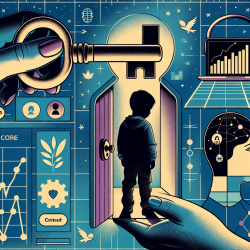Here are the key takeaways from the research and how practitioners can leverage these findings to improve their skills and create better outcomes for children with autism:
Benefits of AI-Powered Interventions
- Increased Engagement and Motivation: AI-powered tools, such as robots and interactive games, have shown to significantly boost engagement and motivation among children with autism. Personalized and engaging experiences tailored to each child's unique needs can lead to improved learning outcomes.
- Customized and Individualized Interventions: AI technologies can analyze a child's behavior and adapt learning materials accordingly, providing a personalized learning experience that caters to their specific strengths and challenges.
- Real-Time Feedback: AI systems offer immediate feedback to both children and educators, helping to reinforce positive behaviors and identify areas for improvement. This allows for timely adjustments in teaching strategies.
Challenges and Considerations
- Technology Issues: Technical glitches can disrupt the learning process, highlighting the need for reliable and user-friendly AI systems.
- Training Needs: Educators must be adequately trained to effectively implement AI interventions and tailor them to each child's needs.
- Data Privacy Concerns: Ensuring the privacy and security of sensitive data is crucial. Transparent privacy policies and procedures must be in place to build trust among educators and parents.
- Cultural and Linguistic Appropriateness: AI interventions must be designed to be culturally sensitive and relevant, accommodating diverse linguistic backgrounds.
Recommendations for Practitioners
To effectively implement AI-powered interventions and address the associated challenges, practitioners should consider the following strategies:
- Ongoing Training: Regular professional development opportunities should be provided to educators to ensure they are well-equipped to use AI tools effectively.
- Collaboration with Developers: Educators should work closely with AI developers to provide feedback and ensure the tools meet the specific needs of children with autism.
- Regular Audits: Conduct regular audits of AI interventions to identify and address potential biases or discriminatory content.
- Family and Community Involvement: Engage families and communities in the design and implementation process to ensure their perspectives are considered and valued.
By addressing these challenges and leveraging the benefits of AI, educators can create more effective and inclusive learning environments for children with autism.
To read the original research paper, please follow this link: Teachers and educators’ experiences and perceptions of artificial-powered interventions for autism groups.










